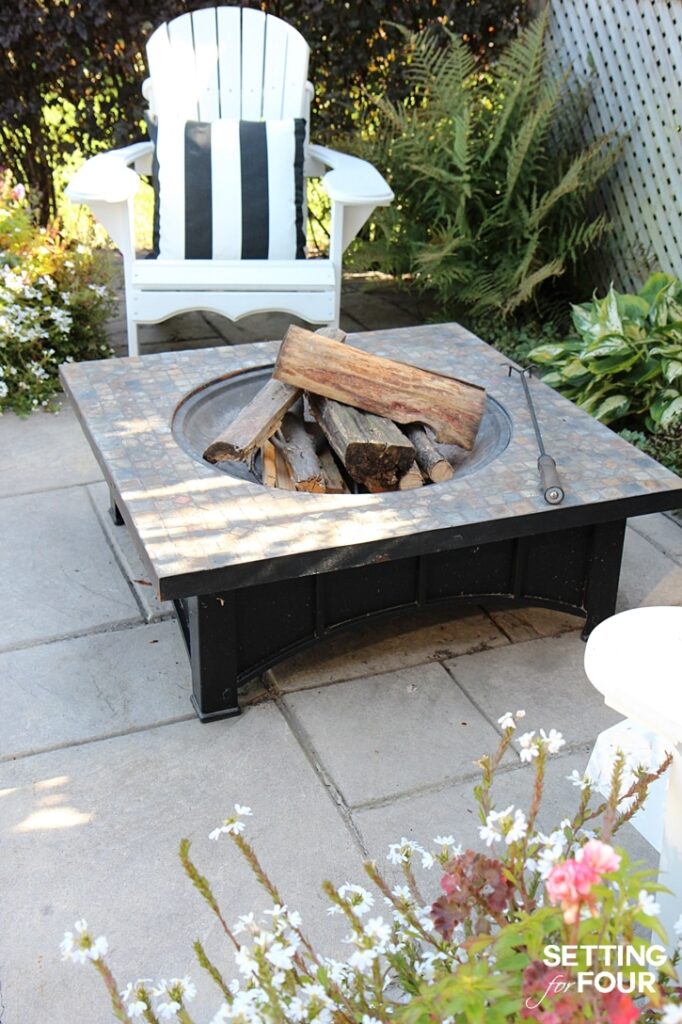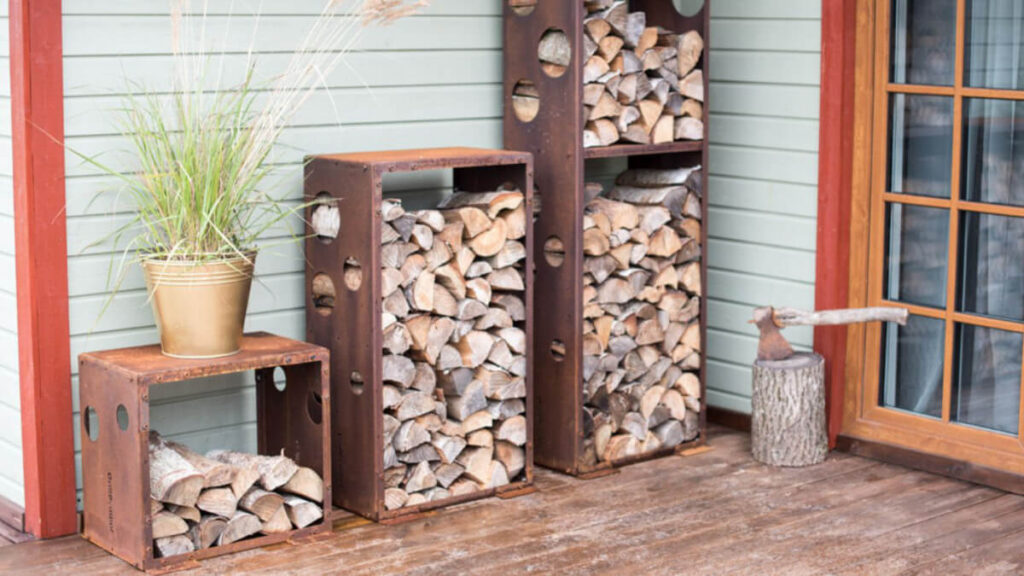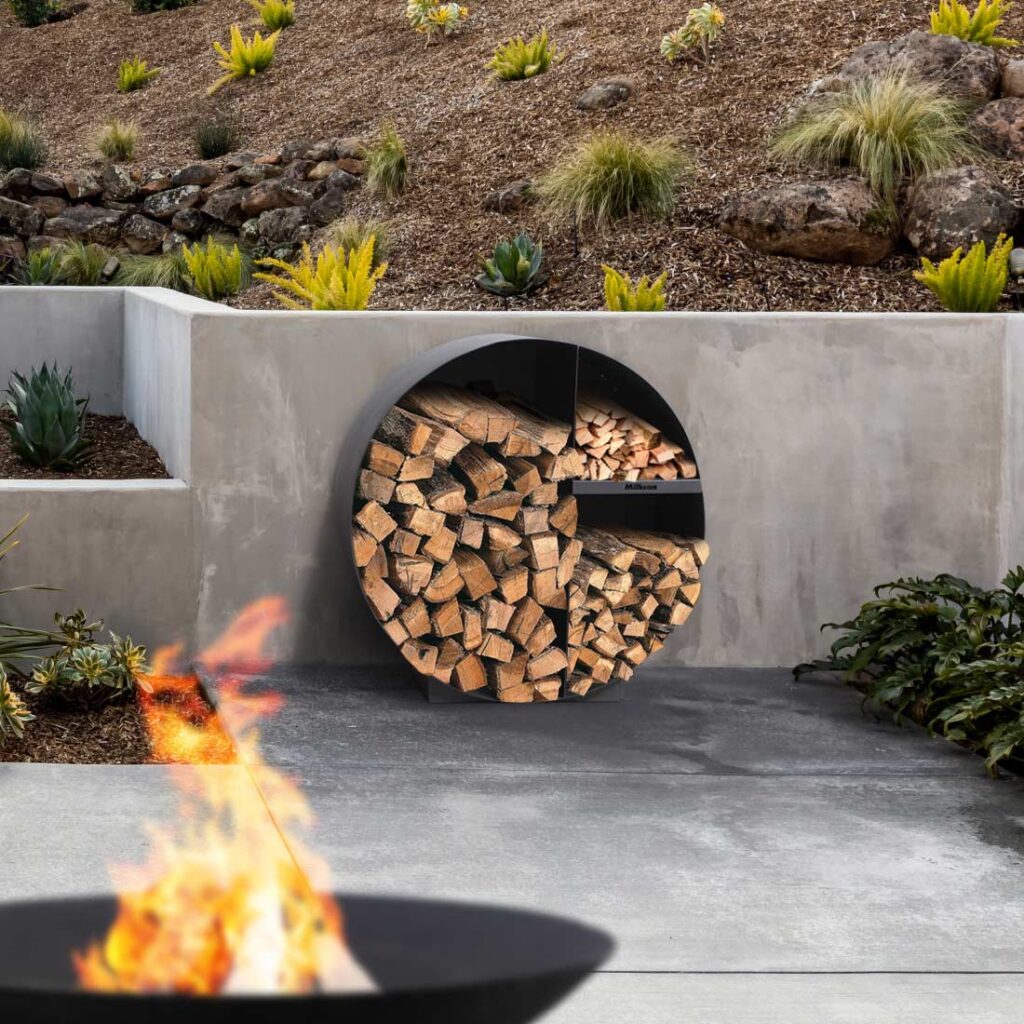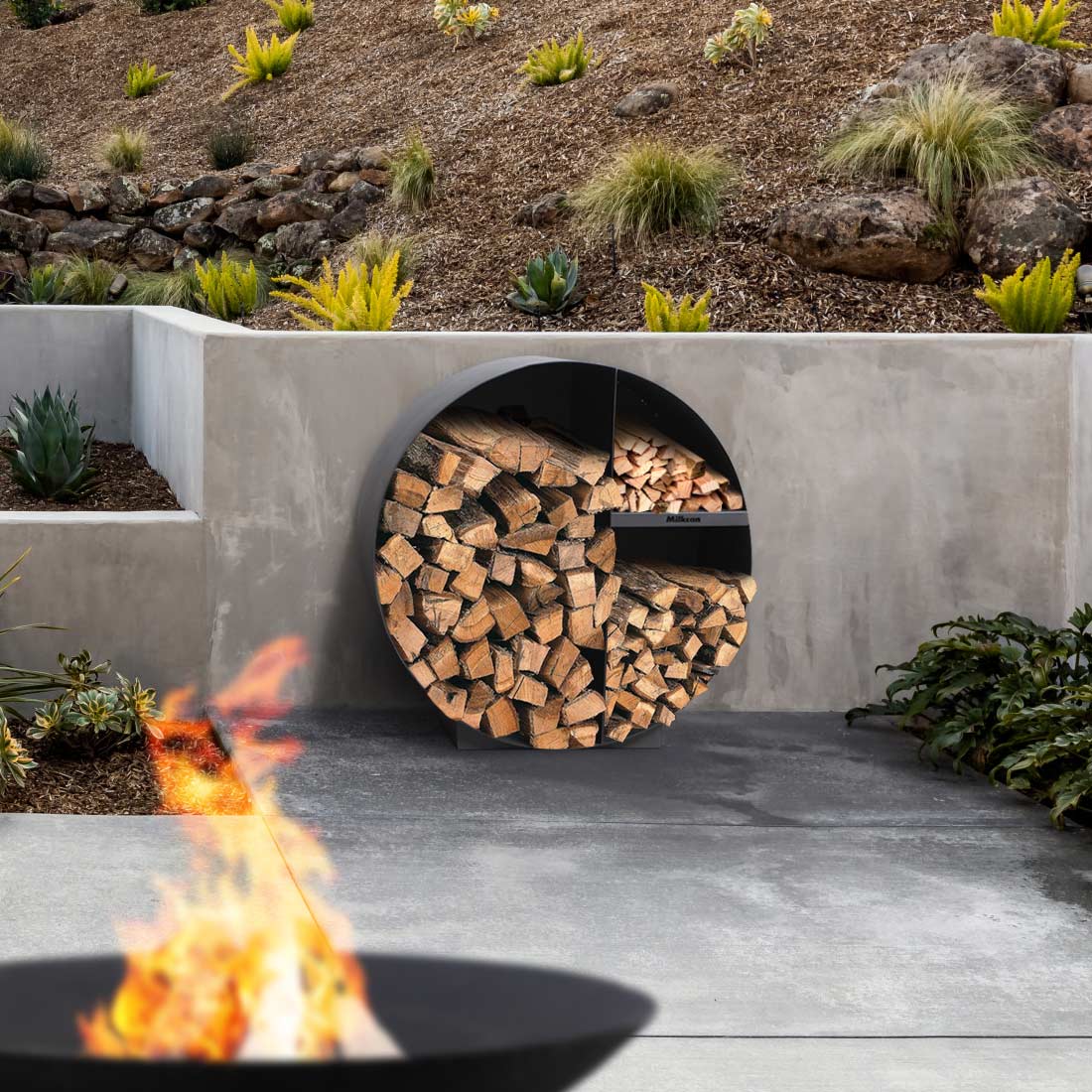Are you looking to create the perfect firewood storage solution for your wood fire pit? In this article, we will discuss the best methods for storing firewood to ensure it stays dry, seasoned, and ready to use for your cozy outdoor fires. From choosing the right location to organizing your wood pile, we’ve got you covered with all the tips and tricks you need to keep your firewood in great condition. So grab your gloves and get ready to set up the ideal wood storage system for your next backyard bonfire! What’s the Best Way to Store Firewood for a Wood Fire Pit?
Have you recently invested in a wood fire pit for your outdoor space and are wondering how to properly store firewood for it? You’re in the right place! In this article, we will explore the best ways to store firewood so that it remains dry, seasoned, and ready to use for your next cozy evening by the fire. Let’s get started!
Selecting the Right Type of Firewood
Before we dive into the storage methods, it’s important to first consider the type of firewood you’ll be using. Different types of wood burn differently and produce varying levels of heat, smoke, and fragrance. Here are some popular options to consider:
-
Oak: Burns hot and slow, producing a long-lasting fire with minimal smoke.
-
Maple: Burns evenly and is a good choice for both cooking and heating.
-
Hickory: Known for its strong aroma and long-lasting burn.
-
Birch: Ignites easily and burns quickly, perfect for starting a fire.
-
Pine: Burns hot and fast, but can produce a lot of sparks and pop.
-
Apple: Known for its sweet aroma and great for cooking.
Choose a type of firewood that aligns with your preferences and needs, and ensure that it is properly seasoned for the best burning results.
Friendly Tip:
When selecting firewood, aim for pieces that are dry, well-seasoned, and free of mold or pests. Green or freshly cut wood will not burn efficiently and can cause excessive smoke and creosote buildup in your chimney.
Finding the Right Storage Location
The key to properly storing firewood is to keep it dry and protected from the elements. Choosing the right location for your firewood stack is crucial for ensuring that it remains in good condition. Here are some factors to consider when selecting a storage location:
-
Air Circulation: Opt for a location with good air circulation to help the wood dry out and prevent moisture buildup.
-
Sunlight Exposure: While some sunlight is beneficial for drying out the wood, excessive exposure can cause it to dry out too quickly and lead to cracking.
-
Protection from Rain: Ensure that your firewood stack is covered or sheltered to protect it from rain and snow.
-
Accessibility: Choose a location that is convenient for accessing firewood when needed, especially during colder months.
Friendly Tip:
Consider building a firewood rack or using a firewood shed to keep your firewood neatly stacked and protected from the elements. This will help prolong the life of the wood and make it easier to maintain.

How to Stack Firewood Properly
Properly stacking firewood is essential for ensuring that it remains stable, well-aerated, and easy to access. Here are some tips for stacking firewood like a pro:
-
Choose a Level Surface: Start by selecting a flat and level surface for your firewood stack to prevent it from toppling over.
-
Create a Base: Lay down a row of larger logs as the base of your stack to provide stability and elevate the wood off the ground.
-
Stack Methodically: Stack the firewood in alternating layers, similar to building a log cabin, to allow for proper airflow and stability.
-
Leave Gaps: Leave small gaps between the logs to promote air circulation and help the wood dry out evenly.
-
Cover the Stack: Consider covering the top of the stack with a tarp or firewood cover to protect it from rain and snow.
Friendly Tip:
Avoid stacking firewood directly against a wall or building, as this can inhibit airflow and lead to moisture buildup, mold growth, and pest infestations. Leave some space between the stack and any structures for optimal drying and ventilation.
Seasoning Firewood for Optimal Burning
Seasoning firewood is the process of drying it out to reduce its moisture content, enhance its burn efficiency, and promote a cleaner fire. Properly seasoned firewood burns hotter, produces less smoke, and helps prevent creosote buildup in your chimney. Here’s how you can season firewood effectively:
-
Split the Wood: Start by splitting larger logs into smaller pieces to expose more surface area to air and speed up the drying process.
-
Stack the Wood: Stack the split wood in a single row with adequate spacing between the logs to allow for air circulation.
-
Elevate the Stack: Place the stack of firewood on a raised platform or pallet to keep it off the ground and prevent moisture absorption.
-
Cover the Stack: Cover the stack with a tarp or firewood cover, leaving the sides open for ventilation, to protect it from rain and snow.
-
Patience is Key: Depending on the type of wood and environmental conditions, firewood can take anywhere from six months to two years to properly season.
Friendly Tip:
To test if your firewood is properly seasoned, look for cracks in the ends of the logs, a hollow sound when two pieces are banged together, and a lighter weight compared to freshly cut wood. Well-seasoned firewood should have a moisture content of around 20% or less.

Choosing the Right Firewood Storage Method
There are several storage methods you can utilize to keep your firewood dry, seasoned, and ready to use. Depending on your available space, budget, and personal preferences, you can choose the storage method that works best for you. Here are some popular options to consider:
-
Firewood Racks: Firewood racks are a simple and affordable storage solution that keeps your firewood neatly organized and off the ground. You can choose from a variety of sizes and designs to suit your needs.
-
Firewood Sheds: Firewood sheds are larger structures that provide ample storage space for your firewood stack. They offer protection from the elements and can also serve as a decorative addition to your outdoor space.
-
DIY Firewood Storage: If you’re feeling crafty, you can build your own firewood storage solution using pallets, cinder blocks, or other materials. DIY storage options can be customized to fit your space and budget.
-
Indoor Storage: If you have limited outdoor space or want to keep firewood close to your wood stove or fireplace, consider storing a small supply of firewood indoors. Just be sure to properly season the wood and avoid bringing pests indoors.
Friendly Tip:
No matter which storage method you choose, it’s important to regularly inspect your firewood stack for signs of moisture, mold, or pests. Remove any damaged or infested wood to prevent spreading and maintain a clean and efficient firewood supply.
Protecting Firewood from Pests and Mold
One of the challenges of storing firewood is protecting it from pests such as termites, ants, and beetles, as well as mold and mildew growth. Here are some tips for preventing pest infestations and mold damage in your firewood stack:
-
Elevate the Stack: Keep your firewood stack elevated off the ground on a rack or pallet to prevent pests from easily accessing the wood.
-
Inspect Regularly: Check your firewood stack regularly for signs of pests, such as small holes, powder-like residue, or insect activity.
-
Rotate the Wood: Use the oldest firewood first and rotate the stack to ensure that the wood is used before pests have a chance to infest it.
-
Keep it Dry: Moisture can promote mold and mildew growth in firewood. Ensure that your stack is properly covered and ventilated to prevent moisture buildup.
-
Use Insect Repellents: Consider using natural insect repellents such as cedar chips, citrus peels, or diatomaceous earth to deter pests from infesting your firewood.
Friendly Tip:
To prevent mold growth in your firewood stack, avoid covering the entire stack with a tarp or plastic sheeting, as this can trap moisture and create a humid environment. Instead, opt for a breathable firewood cover that protects from rain while allowing for ventilation.

Maintaining a Clean and Organized Firewood Stack
In addition to proper storage and protection, maintaining a clean and organized firewood stack can help prolong the life of your firewood and make it easier to use. Here are some tips for keeping your firewood stack in top condition:
-
Remove Debris: Clear away any leaves, twigs, or debris from your firewood stack regularly to prevent mold growth and pest habitats.
-
Stack Neatly: Keep your firewood stack neat and organized by restacking any toppled logs, filling in gaps, and maintaining a stable structure.
-
Rotate the Stack: As you use firewood from the stack, rotate the remaining logs to ensure that they are all properly seasoned and ready to burn.
-
Use a Log Holder: To make it easier to transport and use firewood indoors, consider using a log holder near your fireplace or wood stove.
-
Safety First: Always prioritize safety when handling firewood, wear gloves to protect your hands, and use proper lifting techniques to prevent injuries.
Friendly Tip:
To add a decorative touch to your outdoor space, consider stacking firewood in a visually appealing pattern, such as a crisscross or checkerboard design. Not only will it look great, but it will also promote proper airflow and drying of the wood.
Final Thoughts
Properly storing firewood for your wood fire pit is essential for ensuring that you have a clean, efficient, and enjoyable fire-burning experience. By selecting the right type of firewood, finding the ideal storage location, seasoning the wood properly, and implementing effective storage methods, you can maintain a steady and reliable supply of firewood for all your outdoor and indoor fire needs.
We hope this article has provided you with valuable insights and tips for storing firewood like a pro. Remember to regularly inspect and maintain your firewood stack to prevent pest infestations, mold growth, and moisture damage. Stay warm, stay safe, and enjoy the cozy ambiance of a crackling fire on a chilly evening!



